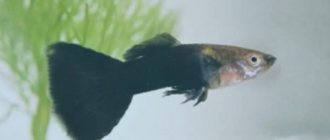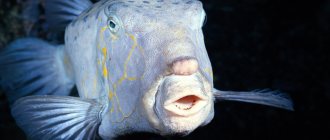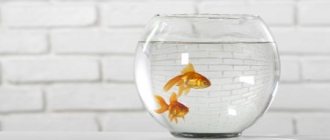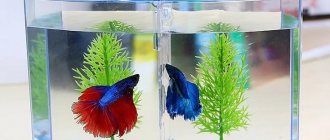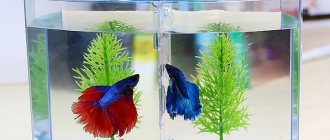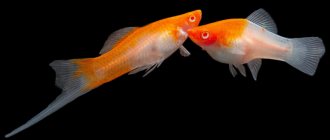Introduction
I think it’s not worth describing in detail the filtration process in an aquarium here. Let's just get the basics straight. It is known that there are several types of filtration in an aquarium: mechanical, chemical and biological. With mechanical filtration everything is relatively simple. This is the removal of large particles of dirt from water, chemical removal of unwanted elements dissolved in water, including medications after treatment of fish. Using special adsorbents. What remains is biological filtration. This is a simplified version. Decomposition of harmful substances accumulating in the aquarium during the life of the aquarium inhabitants with the help of various bacteria.
For biological filtration, external filters are used that are quite expensive compared to other aquarium equipment. They come in various designs, the most common being external canister-type filters. The main function of the filter is to provide space for the filter media to fill. On the surface and inside of which the very bacteria settle, with the help of which harmful substances are decomposed into less dangerous ones. Is it possible to make an aquarium without a filter, and discard the filter without harming the aquarium itself?
To answer this question. We need to figure out where else besides the filters these beneficial bacteria can settle. In fact, they are spread throughout the entire aquarium. Regardless of whether there is a filter in the aquarium or not. Colonies of bacteria settle on the walls of the aquarium, plants, decorations and the largest colonies, on the ground and inside it. Accordingly, by installing a filter, bacteria are only provided with additional area and conditions are created for their reproduction and, therefore, the effective performance of their functions in processing harmful substances.
What you need for a home aquarium - tips for beginner aquarists
To breed fish, it is important to create the right conditions for keeping them, so information about what is needed for a home aquarium is useful and relevant. There are a number of important points that you should pay attention to so that the water in the vessel remains fresh for a long time and the fish do not get sick.
Air compressor for aquarium
Fish are bred in a confined space, which leads to a lack of oxygen, and this already negatively affects the condition of fish and plants. As a result, after a while the water may turn into a swamp and all the inhabitants will die. If you are wondering why a compressor is needed in an aquarium, then this device ensures the natural saturation of water with oxygen. Pet stores offer a wide selection of such devices, which differ in different parameters. When figuring out what you need for a home aquarium, it’s worth looking at the list of important characteristics of the compressor:
- Performance. Using this parameter, you can understand how much air the compressor can move in a certain period of time. It depends on the type of fish and their quantity. The minimum productivity is considered to be 0.5-0.8 l/h for each liter of volume of a home aquarium.
- Noise level. There are external and internal compressors, but the second option is considered quieter. Please note that the indication “completely silent compressor” may be a promotional ploy, so you need to check everything yourself.
- Power. This setting not only affects power consumption, but also performance. In most cases, the compressors presented have a value of 2-11 W. Please note that the deeper the device dives, the greater its power should be.
Piston compressor for aquarium
According to the method of air supply, there are two types of devices, and the piston is the most popular. It pumps air due to the movement of the piston. When figuring out which filter is best for an aquarium, it is worth considering the main advantages of the piston version: long service life, almost silent operation, high performance and the ability to use it for large aquariums. As for the disadvantages, they also exist, since piston devices consume a lot of electrical energy and are more expensive than other types.
Diaphragm compressor for aquarium
The second type of device differs in the way it works: it has a membrane chamber and pressure differences are noted in it. Its advantages are contrasted with the disadvantages of a piston compressor, as it is distinguished by its low electrical energy consumption and is more affordable. To understand how to choose a compressor for an aquarium, you need to take into account the disadvantages of the membrane version, as it has low power and a higher noise level.
Aquarium water filter
A device designed to filter water in a home aquarium, removing mucus, chemical elements, food residues and other unnecessary particles. There are different types, for example, pump-filters for aquariums are popular, and they consist of a pump needed for pumping water, and directly a container for filtration. The presented devices carry out biochemical and mechanical water purification.
Understanding what is needed for a home aquarium, it is worth mentioning the need to pay attention to the filter filler. A popular material for a water purifier is a sponge, which traps mechanical debris. Over time, beneficial bacteria settle on it, which helps purify the water from nitrates and methane. Activated carbon provides better cleaning, but after it becomes oversaturated with harmful substances, it begins to poison the water and can lead to the death of all fish. Along with mechanical cleaning, it is recommended to use biofillers made of multiporous ceramics.
External filter for aquarium
This type looks like a box containing compartments responsible for different types of filtration. The advantages of such devices include a good level of cleaning, which is combined, a long service life and the absence of the need for frequent washing of structural elements. As for the disadvantages, they also exist: high price, large size and the risk of leakage, which will lead to flooding of the room. A hanging filter for an aquarium can be:
- Suspended (waterfall). This type has two ways of supplying water, so it can enter the container, be cleaned and immediately come back out, and the other option is that the liquid is pumped by a pump and then exits through a drain located above the water level, which looks like a waterfall.
- Canister. Such devices for a home aquarium look like barrels with hoses. They are more spacious for filter media. Canister devices can perform all cleaning options.
Bottom filter for aquarium
A device of this type includes a system of tubes, which are located at the bottom and covered with a special grille, and they are connected to a pump that pumps air and a filter. To decide which filter to choose for an aquarium, you should consider the main advantages of this option: continuous circulation, visual appeal, creating an optimal microclimate, reducing the risk of infection and delaying water pollution processes. You can make a bottom filter with your own hands. This technique has disadvantages:
- inability to clean dirt and large debris from the ground;
- the device quickly becomes clogged and for cleaning you need to completely disassemble the structure;
- cannot be used in home aquariums with large amounts of algae.
Airlift filter for aquarium
This option is considered the lowest power filtration device. It is worth noting that the aerator compressor for an aquarium has significant advantages: affordable price, practicality and reliable design. An air lift cleaner works by the movement of an air compressor. It performs several functions at once, this is how the water is enriched with oxygen, the circulation of liquid inside the vessel is ensured and mechanical impurities are removed. Note that you can also make an airlift filter yourself.
Siphon for cleaning aquarium soil
The design of the soil cleaning device is a long hose with a tube at the end. The siphon acts like a vacuum cleaner, that is, it draws in water, soil and dirt. There is a mesh at the end of the device, so soil particles are not drawn inside. Another point regarding what you need to buy for a home aquarium involves choosing the right siphon:
- Mechanical. Most models have a bulb that pumps water. At the end of the device there is a funnel or transparent cylinder. When using a mechanical siphon, water must be drained.
- Electric. The aquarium soil cleaner is battery-powered and does not require draining the liquid. This type does not have a siphon or hose, which makes it easier to use. The disadvantages of this option include the inability to clean the aquarium deeper than 0.5 m.
Soil for planting plants in an aquarium
When decorating home aquariums, many people use different plants, for which they need to choose good soil.
- The selected mixture should not contain components that are susceptible to decay, for example, humus, young peat, loam and sand finer than 2 mm.
- Nutrient soil for an aquarium must have the ability to accumulate and transfer beneficial substances to the roots.
- The structure of the aquarium soil must certainly be porous so that water can freely penetrate into the soil and the roots receive oxygen. The optimal particle size is 3-8 mm.
- The soil should not contain large amounts of calcareous rocks; a slightly acidic reaction is considered ideal, that is, the pH value should be less than 7.
- The instructions regarding what is needed for a home aquarium indicate that the nutrient soil should not damage the roots, clump or cake.
House plants for the aquarium
To make the aquarium look attractive in the end, you cannot do without the use of vegetation. The market offers a wide range of both live and artificial algae, thanks to which you can create original compositions suitable for selected fish and other marine inhabitants. Glowing plants for an aquarium look original and will make the container especially attractive at night.
Decorating an aquarium with plants
There is a wide range of algae that are suitable for creating a beautiful and original composition. When researching the topic of what to buy for a home aquarium, you should indicate the most popular types:
- Cirrus. Algae have thin stems and are covered with feathery leaves. It is recommended to plant in fine sand.
- Anubias. Live aquarium plants have strong roots and tough leaves, making them ideal for tanks where herbivorous fish live. Anubias are hardy and affordable. Given the presence of a powerful root system, algae can be attached to stones and snags.
- Krinum Thai. A hardy plant for the home aquarium that has both strong and delicate leaves. They can be trimmed and even tied into a knot. Crinum needs to be planted in the soil.
Plants for an aquarium without soil
Some aquarists do not use soil, for example to save themselves the hassle of cleaning it or if they have fish that like to tear it up. In this case, it is recommended to choose the best plants for the aquarium that are floating.
- Riccia. This type of algae has a flat shape and a bright green color. For small fish this will be a good shelter, and for large fish it will be an additional source of food.
- Pistia. Due to its external similarity, this culture is popularly called water cabbage. Pistia grows well, but in winter it needs additional lighting.
- Elodea canada. The culture is poisonous, so care must be taken when transplanting it into a home aquarium. It is not dangerous for aquatic abodes.
- Egeria. An excellent type of algae that can be grown both in soil and without it.
Useful plants in the aquarium
There are certain types of vegetation that will not only serve a decorative function, but will also provide benefits.
- Hornwort. Planting plants in an aquarium is recommended because the leaves of this type of algae intensively purify the air. At the same time, turbidity forms on their surface, which must be washed off periodically.
- Vallisneria. This type of algae helps saturate the liquid with oxygen, and it also takes an active part in the cycle of organic and inorganic substances, both in water and in soil.
Decorating aquariums with artificial plants
The choice in favor of false plantings is made in most cases when there are large and herbivorous fish in the home aquarium, when there is no time to care for living vegetation, or when the vessel serves only a decorative function. Disadvantages include the need to use an additional method to destroy nitrates, which live algae combat. To decide which plants are best to use in an aquarium, it is worth considering the advantages of artificial plantings:
- The presence of a wide range, and many of the plants are of high quality and, in appearance, they look like real ones.
- Artificial products are affordable and will last a long time.
- Unlike living plantings, artificial species do not require additional care, that is, proper lighting, nutrition, and so on.
- Pisces are not interested in artificial products and will not destroy them, so you can create a beautiful composition.
Related articles:
| Nutrient soil for aquarium plants is very important; this substrate maintains the water in good quality, promotes the residence of beneficial bacteria that take care of the ecosystem, is an absorber of toxic substances and a repository of essential microelements. | Shrimp in an aquarium - simple rules of care Shrimp in an aquarium, living as pets, require less care than fish or turtles. They are less demanding in nutrition and maintenance, so they are ideal for novice breeders or people who have little free time. |
| Discus - maintenance and care, important rules for aquarists Beautiful discus, the maintenance and care of which is carried out according to the rules, will decorate any aquarium. There are a number of requirements regarding water parameters, the introduction of other fish and other criteria. Reproduction also has some peculiarities. | Pearl gourami - basic rules for care and maintenance Pearl gourami is a beautiful aquarium fish with a scattering of pearlescent spots. Find out what size aquarium she needs, how to equip it, and how to care for such an individual. Familiarize yourself with the main points of breeding spotted fish - how they spawn and feed their fry. |
womanadvice.ru
Conditions necessary for the functioning of an aquarium without a filter
Let's now figure out what needs to be implemented in an artificial reservoir so that the aquarium can exist and develop normally without the use of a filter. The most important thing is to create and maintain a balance in the aquarium between all its inhabitants. Depending on the volume of the aquarium, its population should be adequate to this volume. In other words, with a small population of the aquarium, the overall load on the aquarium also decreases. Since fewer inhabitants produce fewer waste products, the aquarium system is able to cope with this amount, that is, process it.
The next very important point. An aquarium without a filter should be planted as densely as possible. Plants use substances secreted by fish for their nutrition. Moreover, some of the plants should be fast growing. The faster the growth rate of a plant, the more actively it consumes nutrients for its development. Thereby preventing the accumulation of harmful substances to dangerous levels. Fast-growing plants include such unpretentious plants as: elodea, vallisneria, wing fern, and others. It is desirable to have plants such as echinodorus in an aquarium without a filter. Possessing a powerful, developed root system, they prevent silting and acidification of the soil and help maintain the overall biological balance of the system. Slow growing species such as various types of mosses or ferns (Thailand fern). Due to their slow growth, they are not so actively involved in the process of consuming substances. However, in combination with other species, they can certainly be used to organize an aquarium without a filter.
After the aquarium is started. The soil was filled in and after some time the plants were planted. It is necessary to give the aquarium time to mature and the biological balance will naturally improve. As a rule, this takes several weeks. After this period, you can add fish. Once again, I would like to note that in an aquarium without a filter there should be a moderate number of fish. The system itself must cope with the load, and this is impossible with a large population. It is also very important to do periodic water changes of 10-20% of the aquarium volume. In parallel with the replacement, carry out a soil siphon in areas of the bottom not planted with plants. With this approach, an aquarium without a filter will function normally for a long time, no different from aquariums equipped with a filtration system.
HOW OFTEN SHOULD I CLEAN A SMALL AQUARIUM?
All aquariums are individual, each requires a special approach.
The list of procedures and the frequency of cleaning in the aquarium are influenced by:
- the size of the aquarium;
The
smaller the aquarium
, the more
often
you need to clean it and change the water in it.
- the number of inhabitants of the aquarium and their cleanliness ;
The
more inhabitants
there are in the aquarium, the more
often
it has to be cleaned.
It is not recommended to densely populate a home aquarium. If large species of fish live in a home aquarium, then the soil and aquarium need to be cleaned more often. And, for example, snails and catfish are natural orderlies of a reservoir, and you can clean them a little less often. - degree of contamination of the aquarium;
If the time for scheduled cleaning of the aquarium has not come, but the walls are covered with a green coating, or turbidity rises from the ground, if the fish swim near the bottom, then you either need to
reconsider the cleaning schedule
or check the quality of the water in the aquarium.
— well-being of the aquarium inhabitants;
If the water in the aquarium appears clean, but
the behavior of the fish
worries
you , then one of the reasons may be an excessive
concentration of nitrogen compounds
in the aquarium.
This means you need to test the water and start cleaning
.
— presence of living plants and their quantity;
Living vegetation in the aquarium
needs to be looked after weekly
. Plants require a certain temperature regime and lighting. But the more plants are planted in the aquarium, the less often you will have to clean it.
- aquarium design;
The
more decorations
, the
more
elements need to be washed.
— type of equipment (filter, lighting, heating);
In order to
clean
the aquarium less often, you can install a cleaning
filter
.
— test indicators;
Aquarists recommend periodically
checking water parameters
using various tests that are sold at the pet store (to measure acidity levels, ammonia and ammonium levels, nitrites and nitrates, and water hardness in the aquarium). If the indicators are unsatisfactory, start cleaning.
As already mentioned, there is no general rule on the frequency of cleaning, but, as a rule, in a small aquarium
you need to
clean it 1-2 times a week
,
change the water
every
3-4 days
.
There are also daily
aquarium maintenance activities.
Preparing and cleaning a new aquarium
Before using an aquarium at home, you need to prepare it for fish or turtles. This is required due to the fact that the aquarium is in a warehouse or store, where dust and dirt have accumulated in it.
Preparation
- Leave the new aquarium open for a few hours at room temperature to remove the silicone odor.
- Leave tap water to stand for several days.
Cleaning
- Place the aquarium in a bathtub or basin, laying something down in advance to prevent scratches.
- Rinse the aquarium inside and out with warm, not too hot, water using a sponge.
- If there are smudges or other contaminants, use baking soda as a detergent or wipe the glass with hydrogen peroxide.
- Rinse the aquarium thoroughly (4-5 times) under strong water pressure.
- Rinse with settled water.
- Leave to dry.
Additionally, wash the aquarium components:
- Special substrates should not be washed, but if the soil is quartz, gravel or sand, then it is washed until the water is clear without using cleaning agents.
- Thoroughly rinse all parts of the new filter under running water without detergents.
- Wash decorative items using baking soda.
The next cleaning is carried out no earlier than in a month. During this time, the fish adapt to new living conditions and biological balance will appear. If the aquarium is maintained properly, the water will become transparent with a yellowish tint.
How to care for a salt water aquarium
- For a saltwater aquarium, proper preparation of seawater is an important component. Simply standing the water will not be enough. Distilled liquid or double purified water is used.
- Using pumps, flow is simulated.
- A weekly partial water change is required.
- The walls and bottom are cleaned once a week.
- Water quality must be monitored regularly.
Otherwise, the care rules are the same as for a freshwater aquarium.
